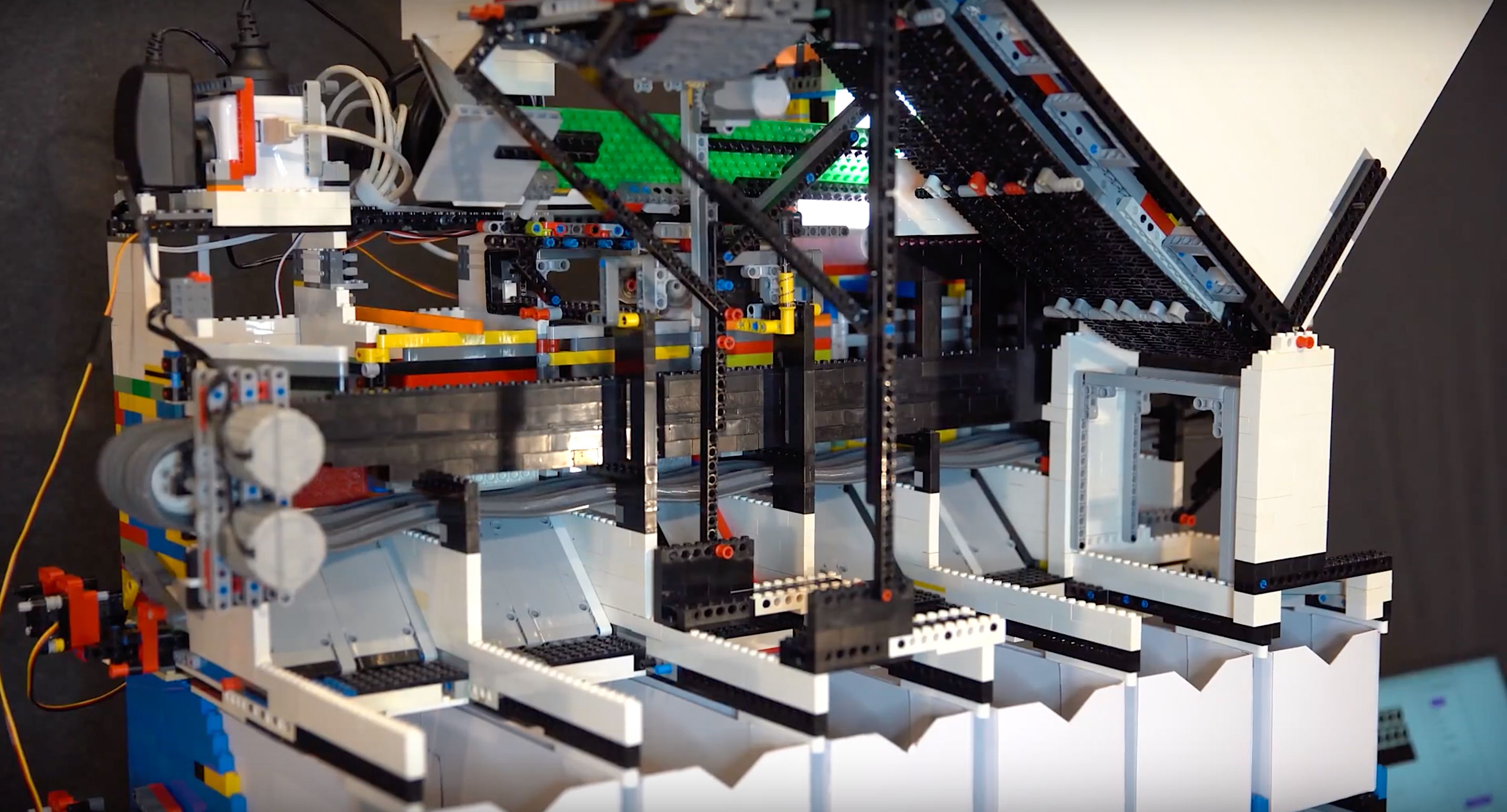Create a free profile to get unlimited access to exclusive videos, sweepstakes, and more!
LEGO fan solves an age-old headache with AI-powered brick sorting machine

Making things with LEGOs is the best, but keeping track of all those infinitely sized bricks is the worst. Nothing stinks more than attempting to put the finishing touches on your space station masterpiece only to realize, after sifting through a jumbled pile, that you’re a few pieces short. Wouldn’t it be great if you knew at a glance exactly what materials remained in your invaluable LEGO inventory before your last-minute builder’s frustration sets in?
LEGO fan Daniel West thought so, and he decided to do something about it. Armed with some impressive computing knowledge and an abundance of patience, West set out to build an AI-powered automated sorting machine that does all the dirty work of putting similarly sized pieces with their own kind — and get this: He built his amazing creation out of LEGOs.
Behold, the game-changing contraption that West has dubbed “the world's first Universal LEGO Sorting Machine” ...
From the clip, it really does appear to be as easy as it sounds: Dump in a chaotic hodgepodge of just about any LEGO piece that’s ever been created, and watch as the machine dutifully scratches that OCD itch to put everything in its proper place. The 3x2 pieces get dumped into the 3x2 bin; the tiny 1x2 pieces go with the other 1x2s; and on and on until you have a nice, neatly organized stockpile of raw LEGO material ready to satisfy your most ambitious creative urge.
West explains in the info that accompanies the video that there’s a handful of specialty pieces the machine can’t process: “parts that are unable to fit in the machine, [or] flexible/articulated parts,” as well as parts that haven’t yet been documented in the LDraw parts library — the open-source computer architectural drawing resource that catalogs the multitude of pieces LEGO has produced over the years.
West gives a shout-out to a similar sorting machine another LEGO fan made back in 2011 as inspiration for his souped-up device, though the earlier version relied on simple physics (shape and weight) rather than machine learning to get the job done. But whether it’s a machine that goes by feel or one — like West’s — that deploys the brain power of an AI neural network, we confess to not being terribly picky. Just hurry up and figure out a way to mass-produce this block-sortin' bad boy … so we can finally get our own LEGO houses in order.


























